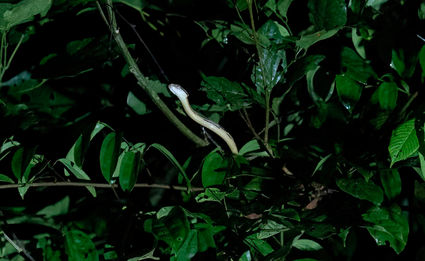CLOCK
To evolve from apes 7 hrs
Homo Sapiens so far 10mins
Human history 30secs
1000 years 3secs
I year 3msec
Borneo & raj ampat 2024

Borneo and Raj Ampat Itinerary 2024
Fly to Singapore
Meet David O, tour city
Fly to Kota Kimbalu, Borneo
Borneo Wildlife Adventure with Wilderness Travel
Fly to Jakarta, tour city
Fly to Sorong, New Guinea
Snorkeling trips based on Yeben Island with Cove Eco
Fly home
Blog of Borneo leg at Wilderness Travel
https://www.wildernesstravel.com/blog/unique-wildlife-adventures-in-borneo/


Singapore
The Gardens by the Bay is an urban park spanning 105 hectares in the Central Region of Singapore, adjacent to the Marina Reservoir.
Asian Civilizations Museum has impressive displays that cleverly document some of the many cultures found in Asia. The centerpiece is the Belitung (Tang) wreck found close to Sumatra. A 800's AD ship from Iran/Iraq carrying 60,000 pieces of ceramic made in China for the East Asian Islamic market. Shows industrial scale import/export business in 800 AD.
Chinatown is one of Singapore’s most historically intact areas.
https://www.audleytravel.com/us/southeast-asia/region-guides/stopover-in-singapore
Jakarta
Grand Hyatt Hotel in Central Jakarta
Museum Tekstill & Batik class in South Jakarta
Dutch style canal bridge.
Shopping - Streets of Kemang in South Jakarta & Pasar Tanah Abang market
Borneo Wildlife
Borneo Wildlife Adventure with Wilderness Travel
Sepilok Rehab centers for Orangutans, Sun Bear
Kinabatangan Wetlands boat tours
Tabin Reserve truck tours
Danum Reserve walking tours
Kinabatangan Wetlands 30x30 km - wild orangutans, proboscis monkeys, macaques, and riverine birds. night walk to search for nocturnal species such as mousedeer, western tarsiers (tiny primates), and civet cats as well as reptiles and insects. pygmy elephants.
Tabin Wildlife Reserve 1000x1000 km - Mammals inhabiting Tabin include flying squirrels, Asian palm civets, Malayan civets, and pig-tailed macaques. Two of the larger mammals in Sabah, the Borneo pygmy elephant and the banteng (known locally as tembadau) are found within the Tabin reserve, along with nine species of primates. Tabin is also one of Borneo’s best birding areas, home to sought-after species such as the rhinoceros hornbill and the endemic blue-headed pitta.
Danum Valley Conservation area 20x20 km in size- Danum is home to extremely rare and endangered mammal species including the banteng wild cattle, clouded leopard, mousedeer, gibbon, and maroon-leaf langur. Bird life is also extensive and varied, with over 300 species recorded. In evening, look for tiny mouse-deers, primates such as slow loris, and bioluminescent fungi. Chance to see a Binturong - a nocturnal large chimp sized black/grey civit cat relative with a prehensile tail.
Raj Ampat Wildlife
Raj Ampat Trip with Cove Eco
Mon Sorong to Waigeo to Yeben
Tues Manta Cove and Yefnabi Jetty on Pualu Yefnabi -
Wed Mellissa's Garden and Viewpoint on Piaynemo, Fam Channel on Fam.
Thurs Hike at Sawinggraii Village, Jetty on Arborek.
Fri Anitas Garden and Rufus Ridge on Piaynemoa.
Sat Cove Eco Resort to Sorong
https://papua-diving.com/snorkeling-in-raja-ampat/
Raja Ampat is on the Australasian side of the "Wallace Line", that runs East of Borneo and separates the biogeographical realms of Asia with elephants and tigers, and New Guinea and Australia with marsupials. Borneo and Bali were part of the Asian tectonic plate, and New Guinea part of the Australian plate. It is considered the global center of tropical marine bio-diversity and is referred to as The Crown Jewel of the Bird's Head Seascape, which also includes Cenderawasih Bay and Triton Bay. The region contains more than 600 species of hard corals, equaling about 75 percent of known species globally, and more than 1,700 species of reef fish – including on both shallow and mesophotic reefs. Compared to similar-sized ecosystems elsewhere in the world, this makes Raja Ampat's biodiversity the richest in the world. Endangered and rare marine mammals such as dugongs, whales (such as blue or/and pygmy blue, bryde's, less known omura's, sperm), dolphins, and orcas occur there. In the northeast region of Waigeo island, local villagers have been involved in turtle conservation initiatives by protecting nests or relocating eggs of leatherback, olive ridley and hawksbill turtles.
https://reefbuilders.com/2020/04/07/the-shape-of-corals-is-linked-to-how-they-feed/





















































